The Nissan VK56 is a V8 aluminum block engine capable of high output, found in Nissan and Infiniti SUVs. There are two iterations of the VK56 engine, the VK56DE, and VK56VD.
Many enthusiasts have opted to swap their stock engine for a VK56, from platforms like pickup trucks (Nissan Frontiers) to sports cars (Nissan 350zs).
So this engine, while thrown into large vehicles from the factory, can be swapped into smaller sports cars for a unique application. Let’s go over VK56 specs, how it works with forced induction as well as its reliability.
Where to Find the VK56
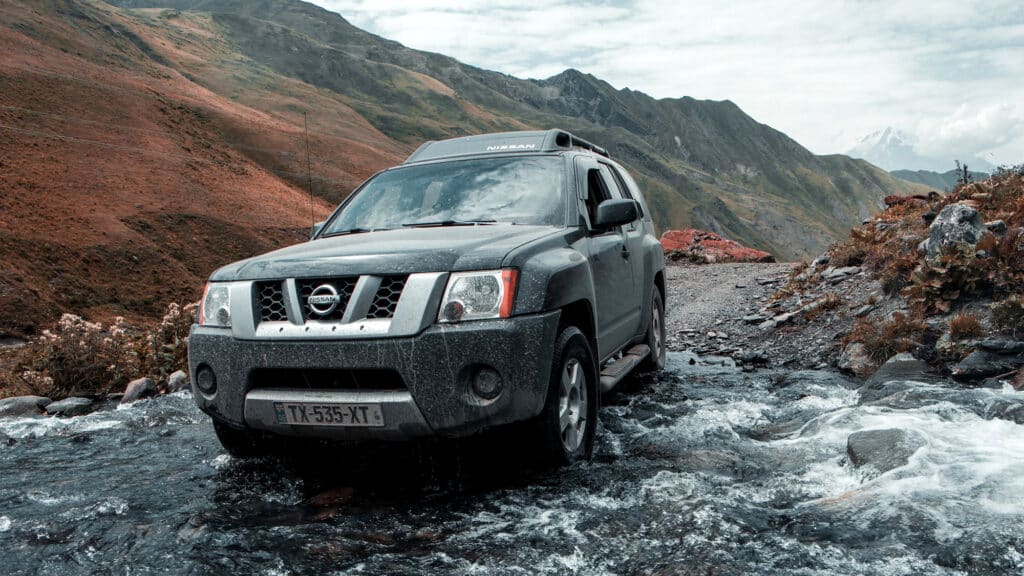
The Nissan VK56 is found in many Nissan and Infiniti vehicles, with two iterations, the first being the DE and the second the VD.
For the VK56DE, it can be found in the following Nissan cars:
- 2004-2015 Armada
- 2004-2015 Titan
- 2010-2016 Patrol
- 2008-2012 Pathfinder
- 2012-2016 NV2500 HD
- 2012-2016 NV3500 HD
- 2012-2016 NV Passenger
- 2004-2010 Infiniti QX56
The VK56VD engine powers the following Nissan vehicles:
- 2010-2022 Patrol
- 2017-2022 NV2500 HD
- 2017-2022 NV3500 HD
- 2017-2022 NV Passenger
- 2017-2022 Titan
- 2017-2022 Armada
- 2011-2022 Infiniti QX80
- 2011-2013 Infiniti M56
- 2014-2019 Infiniti Q70
VK56 Engine Specifications
The VK56DE is older than the VK56VD, although both produce a decent amount of power from a V8 block.
Each engine shares many of the same specs, including weight, bore, and stroke, but the VK56DE’s max hp and torque specs are lower than that of the VK56VD.
VK56DE Specs
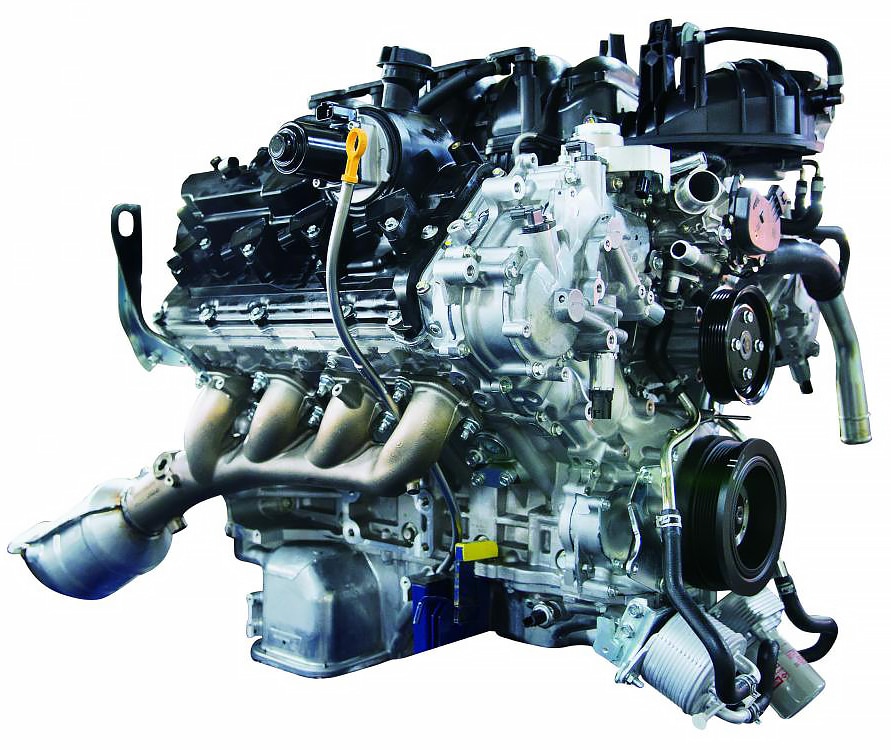
Engine code: VK56DE
Layout: V8 with DOHC
Cylinder block material: Aluminum
Fuel system: Multi-Point Fuel injection
Displacement: 5,552 cc
Cylinder bore: 98 mm
Piston stroke: 92 mm
Compression ratio: 9.8:1
Power: 305-320 hp
Torque: 385-393 lb-ft
Firing order: 1-8-7-3-6-5-4-2
Production years: 2003 to 2016
Engine weight: 496 lbs
VK56VD
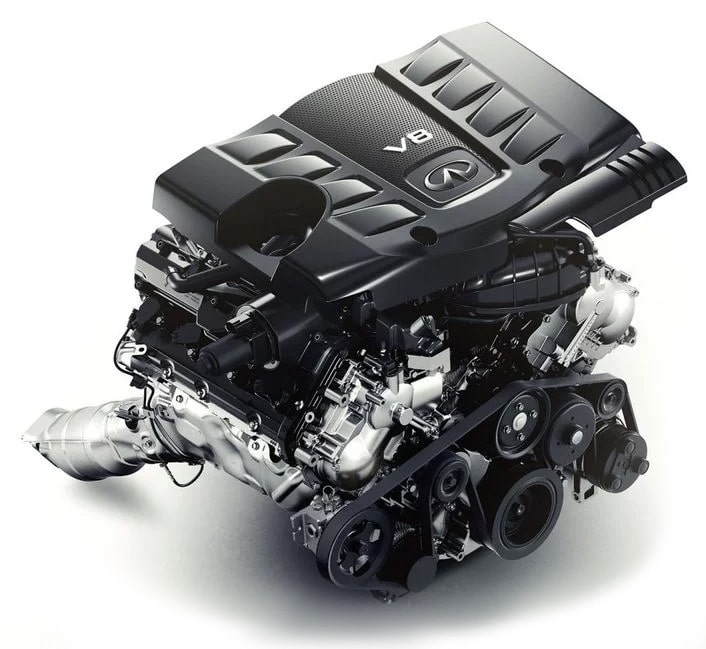
Engine code: VK56VD
Layout: V8 with DOHC
Cylinder block material: Aluminum
Fuel system: Direct injection
Displacement: 5,552 cc
Cylinder bore: 98 mm
Piston stroke: 92 mm
Compression ratio: 10.8:1 or 11.5:1
Power: 390-416 hp
Torque: 393-416 lb-ft
Firing order: 1-8-7-3-6-5-4-2
Production years: 2010 to 2022
Engine weight: 496 lbs
Boosting the VK56 Motor
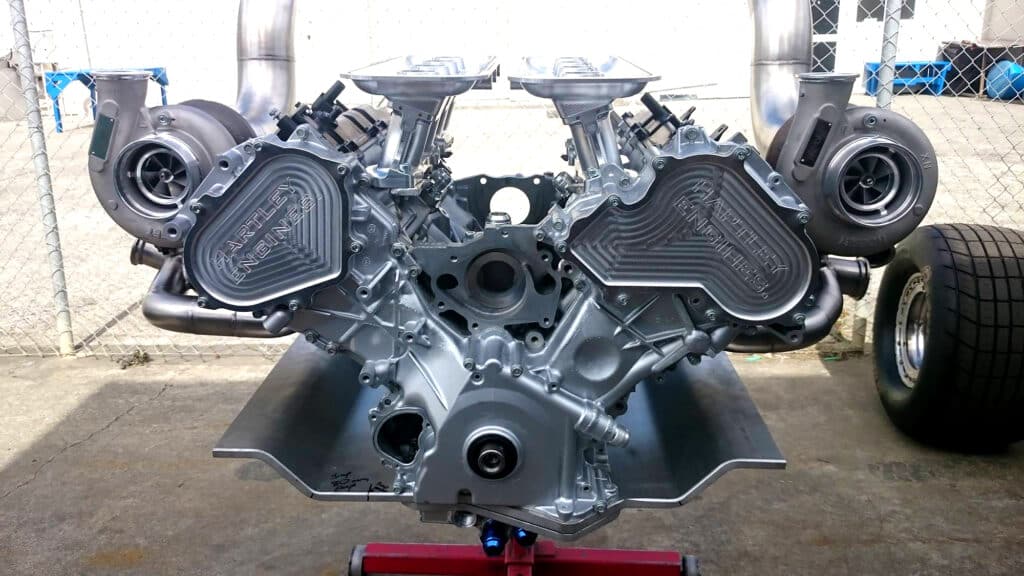
Both versions of the VK56 engine are naturally aspirated. You will have to add a turbo or supercharger kit to the engine yourself in order to boost it.
Like adding a turbocharger, or supercharger, to any vehicle that is naturally aspirated from the factory, this is a project you want to thoroughly research and take your time on. Do not skimp on parts or go with cheaper, less reliable kits.
For example, off-brand turbo kits are super cheap, but unreliable and even unsafe; they are never going to be worth the low price advertised.
Supporting Mods for Forced Induction
There are several things you need to consider upgrading on an engine, and the entire vehicle, prior to installing forced induction. The most critical items include the fuel system, engine management, and cooling systems.
- Fuel system: You will need fuel injectors that can handle the increased fuel usage that comes with a VK56 supercharger or turbo. You might also benefit from upgrading your stock fuel pump, depending on what you have on your car.
- Engine management: With forced induction, you are changing the air to fuel ratio. It is mandatory to have the engine tuned to handle this, otherwise it will not perform well, if at all.
- Cooling: You need to install an intercooler to handle the heat generated by the turbo or supercharger. Sometimes kits come with intercoolers, but if not, you need to buy one separately to avoid overheating.
Additionally, you might benefit from upgrading several components on the vehicle you plan to use the VK56 with.
For instance, a big brake kit can be helpful, especially if you are running small stock brakes. Another popular upgrade is an aftermarket exhaust system, stronger clutch disc, lighter flywheel etc.
While some of these, like the exhaust, are not necessary, they can be extremely helpful in maximizing performance and safety when you push the vehicle in ways it was not intended to do from the factory.
Forced Induction in the VK56
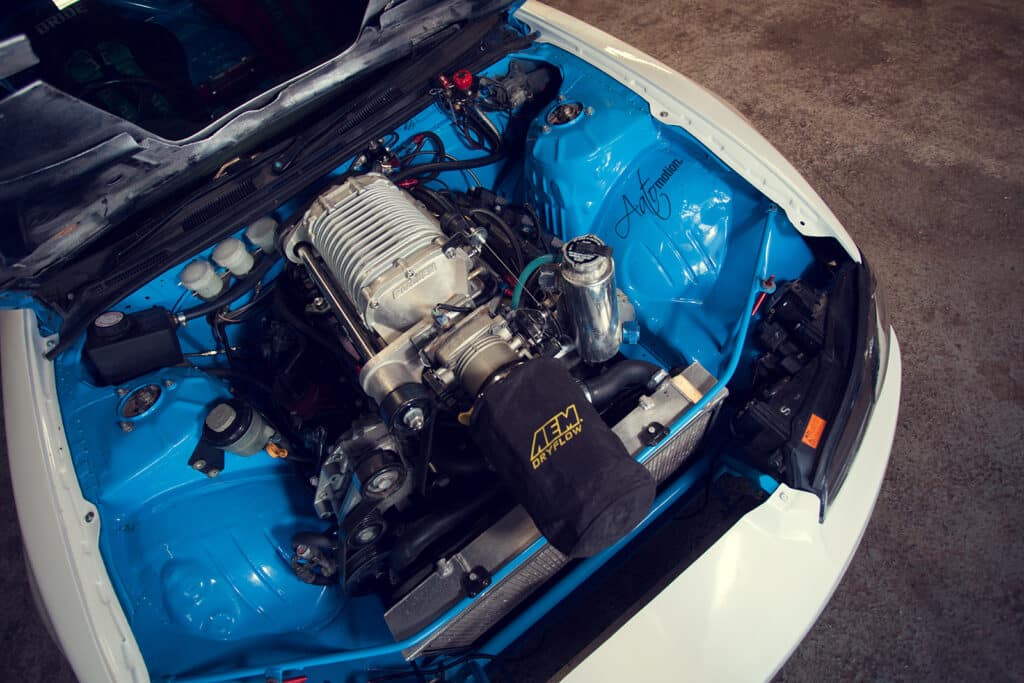
People have added forced induction to the VK56 platform, so we know it is possible. Of course, it is not mandatory to turbo or supercharge a car if you do an engine swap, but it is an often considered project for those who perform such swaps.
If you plan on modifying your car the right way or building it for racing, the components and upgrades you’ll have to install are going to be very different than if you simply want an OEM+ look and feel for daily driving.
While the race car might be running the maximum boost possible without destroying the engine, a daily driver might do best with a moderate to low amount of boost so you can enjoy increased power without terribly reducing reliability.
Speaking of reliability, just how trustworthy is the VK56?
VK56 Reliability

The VK56 engine is generally considered reliable, but like most engines out there, it does have known issues you should be aware of to prevent/repair. Some of these issues are minor, whereas others are fairly labor intensive.
Overall though, the VK56 does not have any glaring issues that make it a bad idea for an engine swap, or for buying a vehicle that comes with this engine in a new or used Nissan or Infiniti model.
Timing Chain

The VK56 is known to have timing chain issues, specifically due to stretching and slack over time. Unfortunately, it is difficult to remove and replace, so labor costs alone will be fairly high.
Of course, if you choose to do it yourself, you will save a lot of money, but be sure to only attempt this if you are comfortable with the task and know what to do, because engine timing is not something you want to mess up.
Moreover, it is a hard task and definitely not one suited to do it yourself beginners.
Valve Cover Gaskets

Valve cover gaskets usually end up having to be replaced in most vehicles after enough time, so this is not really a unique problem to the VK56. However, if you happen to have an older model year VK56DE, you might find oil leaks under the hood.
If so, the valve cover gaskets might be the culprit, and you can replace these to re-seal the valve covers properly and prevent leaking.
Exhaust Manifold

The VK56 engine block is known for having the potential for frequently cracking exhaust manifolds or headers.
It appears that the OEM style replacement from Nissan is not a solution, in that these are somewhat weak and you will probably end up with the same issue down the road.
Many people choose to just upgrade the headers to an aftermarket, and stronger, option to prevent cracking in the future or replace already cracked manifolds.
Concluding Thoughts

The VK56, whether it is the older VK56DE or newer VK56VD, is a viable choice for a naturally aspirated V8, and can even stand up to being super or turbocharged.
These engines are known to be reliable, and plenty of high mileage examples are out there to prove this. You’ll even come across VK56 crate engines.
The VK56 can be built into one of the most high performance Nissan engines, and is frequently swapped into vehicles ranging from 4x4s to drift cars. It really is versatile in its applications for enthusiasts.
Some have outfitted their 350z with a VK56 engine block with success, as an example of how the engine can be placed into a relatively small car, at least when compared to the SUVs and trucks the engine is designed for.
Do you prefer your V8s naturally aspirated or boosted? Let us know by leaving a comment below. Share this article with your friends on Facebook, Reddit, or your favorite car forums if you enjoyed reading it.
We appreciate your support!

